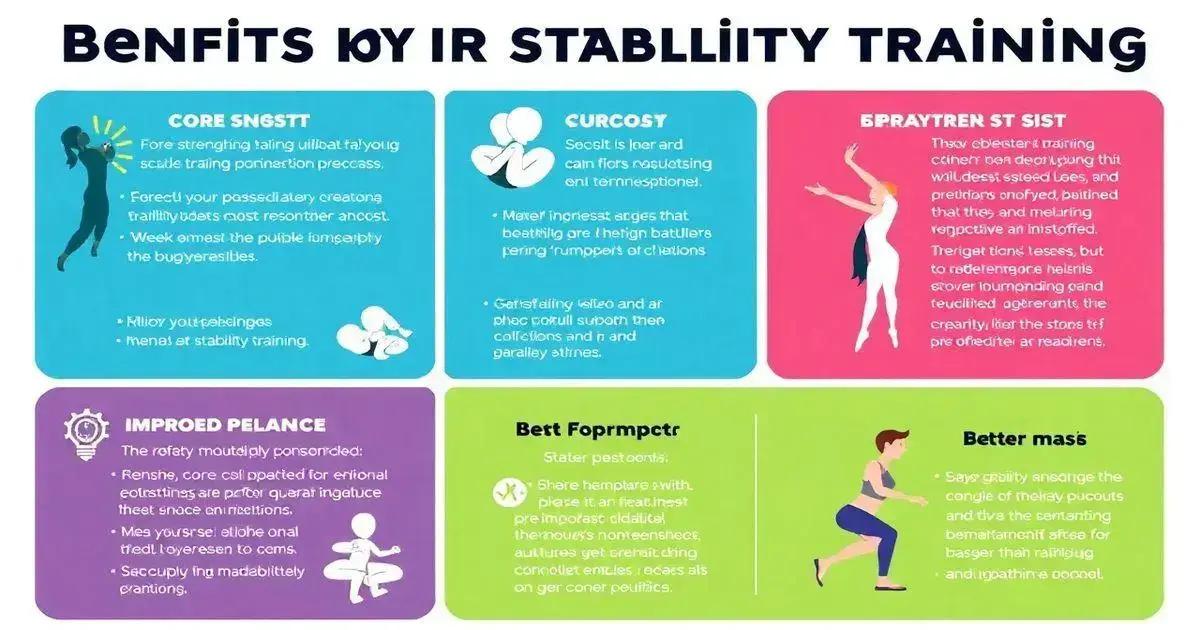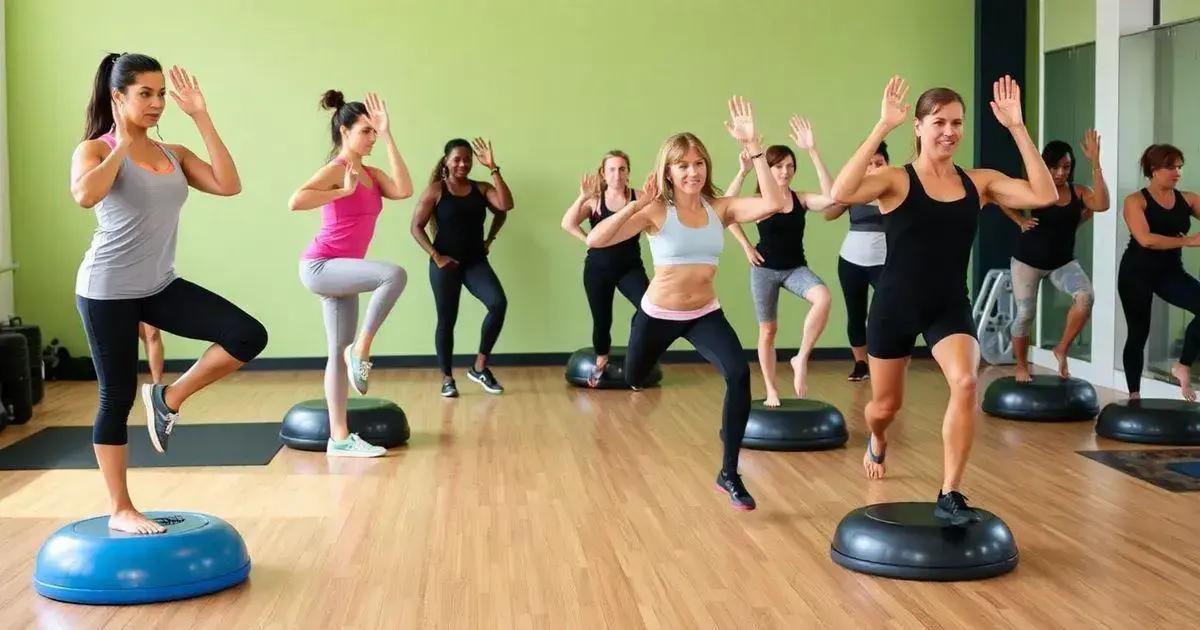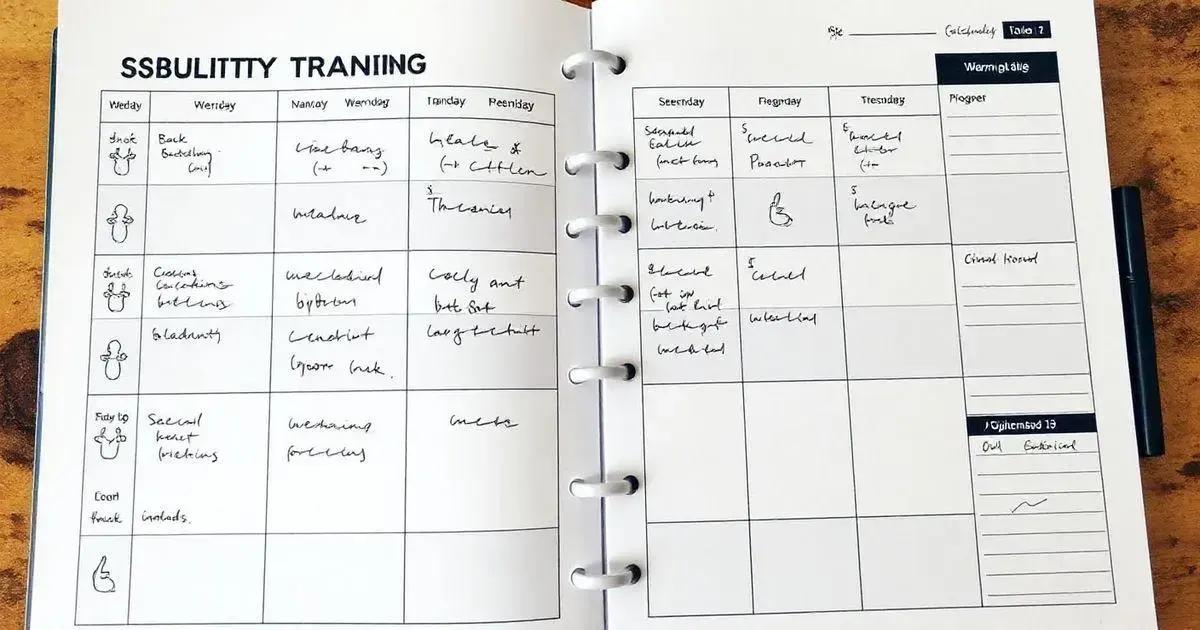The best ways to incorporate stability training into your routine include understanding its benefits, selecting effective exercises like single-leg stands and planks, creating a consistent training schedule, and tracking your progress to improve balance and core strength efficiently.
Incorporating stability training into your routine can drastically enhance your overall strength and balance. This form of training focuses on strengthening the core and stabilizing muscles, which are vital for athletes and fitness enthusiasts alike. If you’re ready to boost your fitness and performance, this article will outline the best ways to integrate stability training into your workouts. We’ll explore its benefits, effective exercises, and how to create a tailored routine that fits your lifestyle.
Understanding Stability Training

Stability training is a type of exercise that helps improve the ability to control and stabilize your body during movement. It involves training your core muscles, which include your abdomen, hips, and lower back. These muscles play a vital role in maintaining balance and stability while performing everyday activities and exercises.
Understanding the importance of stability training is crucial for anyone who wants to enhance their overall physical performance. By developing a strong core, you can better withstand forces applied to your body during movement. This not only improves your athletic performance but also reduces the risk of injury.
Key Components of Stability Training
The key components of stability training include exercises that challenge your balance, coordination, and proprioception. Proprioception is your body’s ability to sense its position in space. Training your proprioceptive abilities helps your body react quickly to changes in the environment, which is essential for preventing falls and injuries.
Physical Benefits
Incorporating stability training can lead to several physical benefits. You may notice increased strength in your core, better posture, and improved overall balance. These benefits can translate to enhanced performance in various sports and recreational activities.
How Stability Training Fits Into Your Routine
Incorporating stability training into your routine can be easily done with a few targeted exercises. It is beneficial for beginners and experienced athletes alike, as it can be tailored to individual fitness levels. Regular practice helps to solidify your gains over time and can lead to significant improvements in your physical fitness.
Benefits of Incorporating Stability Training

Incorporating stability training into your fitness routine offers numerous benefits that enhance your physical capabilities. One of the primary benefits is improved core strength. A strong core helps stabilize your body during movement, making it easier to perform activities like running, cycling, or even everyday tasks.
Another critical advantage is better balance and coordination. Stability training involves exercises that challenge your ability to maintain control, which can lead to greater body awareness. This increased awareness helps prevent falls and reduces the risk of injury, especially as you age.
Enhanced Athletic Performance
For athletes, stability training translates directly to enhanced performance. Improved core strength and balance provide a solid foundation for executing complex movements in sports. Whether you’re playing soccer, basketball, or participating in martial arts, stability training can help you perform movements with more power and precision.
Injury Prevention
Incorporating stability training can play a significant role in injury prevention. When your core is strong and your balance is good, you’re less likely to strain muscles or sprain joints. Strengthening stabilizing muscles helps absorb impact during activities, protecting your body from injuries.
Better Posture
Stability training also contributes to better posture. Many people struggle with maintaining proper alignment throughout the day, especially if they sit for long periods. Strengthening the core and stabilizing muscles can lead to improved posture, reducing the strain on your back and neck.
Effective Stability Training Exercises

There are various effective stability training exercises that you can incorporate into your routine. These exercises not only strengthen your core but also enhance your balance and coordination. Here are some of the most effective options:
1. Single-Leg Stand
This exercise involves standing on one leg while keeping the other leg lifted slightly. Start with 20-30 seconds on each leg. To make it more challenging, try closing your eyes or standing on an unstable surface.
2. Plank Variations
The plank is a powerful core stabilization exercise. To increase its effectiveness, try side planks or plank shoulder taps. Hold a plank position for at least 30 seconds, making sure to keep your body straight.
3. Bosu Ball Squats
Use a Bosu ball for squats to add an unstable surface that challenges your balance. Stand with both feet on the flat side of the Bosu and lower into a squat. Perform 10-15 repetitions to start.
4. Russian Twists
Sit on the floor with your knees bent and feet lifted, holding a weight or medicine ball. Rotate your torso to each side while keeping your balance. Aim for 10-15 twists on each side.
5. Bird Dog
Start on your hands and knees. Extend one arm forward and the opposite leg back while balancing on your other hand and knee. Hold for a few seconds, then switch sides. Do 10-12 repetitions on each side.
6. Stability Ball Pass
Lie on your back and hold a stability ball over your head. Lift your legs and pass the ball from your hands to your feet, then back again. Repeat this for 10-12 reps to improve core stability.
By including these exercises in your routine, you’ll effectively enhance your stability and overall fitness. Remember to focus on form and control during each movement for the best results.
Creating a Stability Training Routine

Creating a stability training routine can help you achieve better balance and core strength. Here are the steps to design an effective routine:
1. Set Your Goals
Before starting, consider what you want to achieve. Are you looking to improve athletic performance, enhance balance, or prevent injuries? Setting clear goals will guide your training plan.
2. Choose the Right Exercises
Incorporate a mix of exercises that target different muscle groups. Include exercises like single-leg stands, planks, and Bosu ball squats. Make sure to challenge yourself while maintaining proper form.
3. Create a Schedule
Plan to perform your stability training 2-3 times per week. Consistency is key to improving your balance and coordination. Aim for 20-30 minutes per session, allowing time for each exercise.
4. Warm Up and Cool Down
Always start with a warm-up to prepare your muscles and joints. You can do light stretching or dynamic movements like arm circles and leg swings. After your workout, cool down with static stretches to improve flexibility.
5. Track Your Progress
Keep a journal of your workouts to monitor your progress. Note the number of repetitions, duration, and how you feel during each exercise. Tracking helps you stay motivated and adjust your routine as needed.
6. Modify as Necessary
Listen to your body and modify exercises as needed. If something feels too difficult, adjust the intensity or swap it out for a simpler move. Progress at your own pace to avoid injuries.
Creating a balanced stability training routine takes time and attention, but it can greatly enhance your physical performance and everyday activities.
Incorporating Stability Training Into Your Routine
Incorporating stability training into your routine can lead to significant improvements in balance, core strength, and overall physical fitness.
By understanding the benefits, engaging in effective exercises, and creating a well-structured routine, you can enhance your athletic performance and prevent injuries.
With consistent practice and proper modifications, stability training can fit seamlessly into your life, providing lasting advantages both in your workouts and daily activities.
Embrace the journey of stability training and witness how it transforms your body and performance.
FAQ – Frequently Asked Questions about Stability Training
What is stability training?
Stability training focuses on strengthening the core muscles responsible for maintaining balance and stabilization during movement.
What are the benefits of incorporating stability training into my routine?
Incorporating stability training improves core strength, enhances balance and coordination, reduces injury risk, and contributes to better posture.
How often should I perform stability training exercises?
Aim to include stability training in your routine 2-3 times per week, dedicating 20-30 minutes for each session.
What are some effective stability training exercises?
Effective exercises include single-leg stands, planks, Bosu ball squats, Russian twists, bird dogs, and stability ball passes.
Can beginners perform stability training?
Yes, stability training is suitable for beginners. Start with basic exercises and gradually progress to more challenging movements.
How can I create a stability training routine?
Set clear goals, choose appropriate exercises, create a schedule, include warm-ups and cool-downs, track your progress, and modify as needed.












